An Effective Tool for Problem Solving – Part 2
In Part 1 we described a method for laying out a chain of events that describes a problematic state of affairs, starting out from a problem statement. We call the resulting diagram a UDP chain, where UDP stands for Undesired Phenomena. I used an example from 6sigma.org to create the following map. If you are one of the few people on the globe who have not read Part 1 (you and the LinkedIn algorithm(:, I strongly recommend that you click here to do so, and 7 minutes later return to continue reading here. In this Part, I will continue with the same example to demonstrate a principle and a tool that can be used to “break the chain” and find solutions to the problem. The following was the UDP Chain based on the Root Cause analysis in the 6sig.org example:
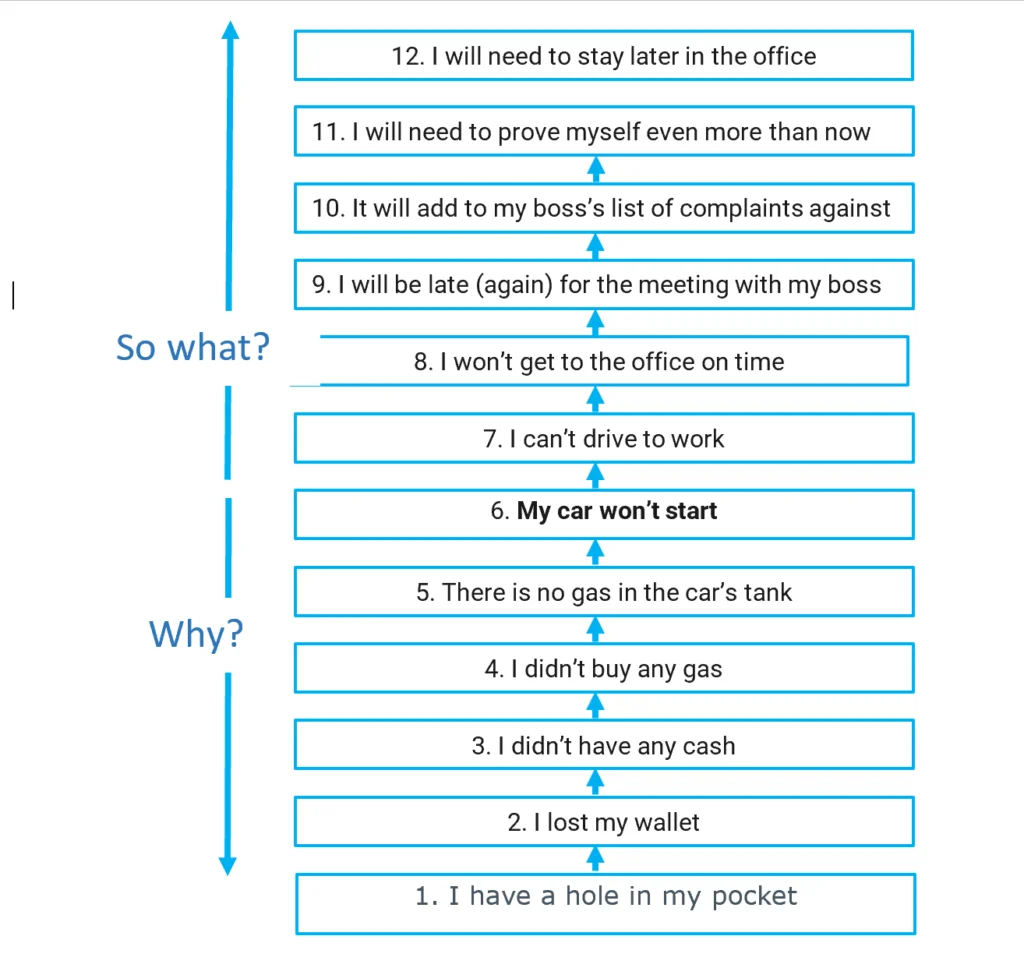
Creating the UDP chain usually results in a first wave of ideas or at least directions for solutions. Simply laying out the problem in this way is conducive to fresh thinking, and to the discovery that some of your colleagues may even understand the problem totally differently from you. But this is only the first part of the exercise.
To test a UDP Chain, we recommend that you read it aloud, from bottom to top, as if you were telling a story. Any defects in the causal logic will immediately emerge as you listen to yourself. In this case the story could sound like this: I have a hole in my pocket, so I lost my wallet, so I was left without cash, so I didn’t buy gas, so my gas tank was left empty, so I couldn’t start my car, so I couldn’t drive to work, so I got to the office late, so I got in late (again) to a meeting with my boss, so it added to my boss’s list of complaints, so I needed to prove myself even more, so I needed to stay late in the office. Every instance of the word “so” represents one of the small causal arrows in the diagram, and if I say, for instance, that there was a hole in my pocket and therefore my wallet got lost, I am accepting the causality of: hole in pocket -> wallet lost. Or: I will get into the office late -> I will arrive late at the meeting. The general structure of the UDP chain is therefore this:
Link N exists and therefore Link N+1 will also come to be (and therefore Link N+2, N+3 and so on). In our approach to problem solving, we aim to break this seemingly necessary sequence of events, by first asking a challenging question:
A) What if, DESPITE N, NOT N+1?, which we can phrase also as:
A*) Let’s accept that N will happen, and then see how we can make sure that in spite of this fact, still N+1 will not happen.
This question leads to a second wave of ideas (the first came through the creation of the UDP chain itself), each created through posing the question on a specific pair of links.
- What if despite the fact that my car won’t start, I can drive to work? (take a cab, get a ride, rent a car, call an Uber etc.)
- What if despite the fact that I can’t drive to work, I will get to the meeting on time? (Zoom?)
- What if despite the fact the I lose my wallet, I will have cash (next time)? (payment app?)
As you may note, each of these questions brings up thoughts, some more mundane others more exciting, but what they all have in common, and this is the power of what we call the first Qualitative Change Question, is that you eschew the tyranny of the causal necessity. Think how often we automatically assume that one bad thing leads to another. The Qualitative Change question challenges this mindset. It is also wise in the way that the famous AA Serenity Prayer (which, I just learned through WP, was written by Reinhold Niebuhr) teaches us:
God, grant me the serenity to accept the things I cannot change,
courage to change the things I can,
and wisdom to know the difference.
With God’s role played in our case by the Spirit of Innovation, we can aim to replace the misguided search for the miraculous Root Cause which when extinguished will solve our problem, with an acceptance that some things we cannot change, don’t need to change, and, as we will see later, may even not wish to.
As I demonstrate in my article about the COVID World (click here to read) both individuals and corporations tend to make the automatic leap from, say, “there is strict social distancing” to “my restaurant/theater business is ruined” while others, who resist the urge, demonstrate that the option to break the chain exists. I am not espousing the New Age concept that just by dint of willing something you can achieve it, only pointing to a possibility to challenge the assumption that you necessarily won’t.
Asking this question provides you with two benefits:
1) You can select a variety of entry points to tackle your problem;
2) You gain flexibility of thought by reconsidering the causal relationship between links in the chain.
You are now ready to ask the Second Qualitative Question, which will challenge your thinking even further than the first:
Qualitative Change Question 2: Given a link N, what if not only will N+1 not come to pass, but
The more N increases, the less N+1 will obtain.
This question not only breaks the causal chain, but turns it on its head.
- The more I lose my wallet the more cash I will have (maybe losing my wallet repeatedly will convince me finally to keep my cash elsewhere?)
- The less cash I have the more I will be able to buy gas (I will finally download the payment app to my phone?)
- The longer my boss’s list of complaints the less I will need to prove myself to her (I finally realize that I don’t want to work for a boss who constantly complains about me, and I finally make the move and leave the job?)
This is the classic “Qualitative Change” in SIT terminology: you train yourself to focus less on the phenomena that are bothering you and more on the relationships between them, and then to challenge the necessity of these relationships. This is pretty powerful when you manage to internalize the habit, and not only in work-related contexts:
- We took the family to the beach and the more it rained the more fun we all had.
- The more time I had to spend driving the girls to their activities around today, the more I advanced with the article I was supposed to write.
Note that if in the first example one could claim that it was just a matter of defining what I considered as “having fun”, in the second example there is an objective measure – the article’s deadline, and the task was indeed objectively achieved by running the article’s outline in my mind as I was driving or sitting around and waiting, or maybe even by discussing some of my premature ideas with the girls while in the car (a conversation such as the one that gave birth to one of my recent posts). Back to a business context and some real-life examples from the past year:
- The less our customers can come to our bank branch, the stronger our relationship becomes (launch an initiative for calling our clients at home and offering support)
- The lower the demand for our flagship product, the more profitable we will be (use the opportunity to focus on launching our higher-margin next generation for which we never managed to get proper management attention before).
You may have noticed that this flipped approach to assessing causal relations, although not identical, is a more generalized form of the well-known tactic of turning a problem into a solution. The UDP approach is wider, and it very rarely fails to deliver solutions, but even when it doesn’t, it invariably leads to fresh perspectives about your predicament.
In future installments we will analyze specific case studies to demonstrate in further detail how these tools can be used and converted into daily habits. Meanwhile, please try this at home!
[The tools described in this post have several progenitors. They are mainly based on the PhD work of Roni Horowitz, who in turn was strongly influenced by the work of both Genrich Altshuler and Karl Duncker, with contributions from Jacob Goldenberg and the SIT team as it used and refined the tools in 25 years of work. No one but me is to blame for the philosophical comments; they are my fault only.]

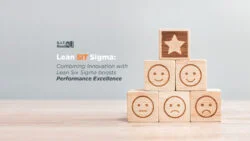
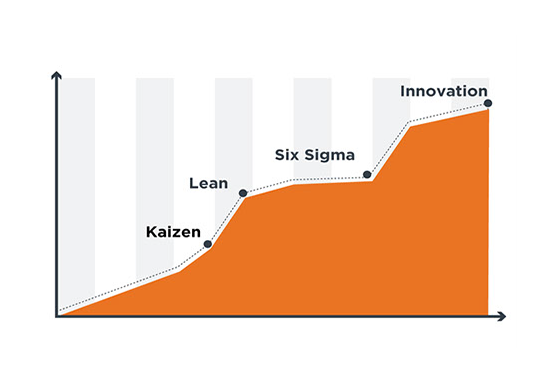
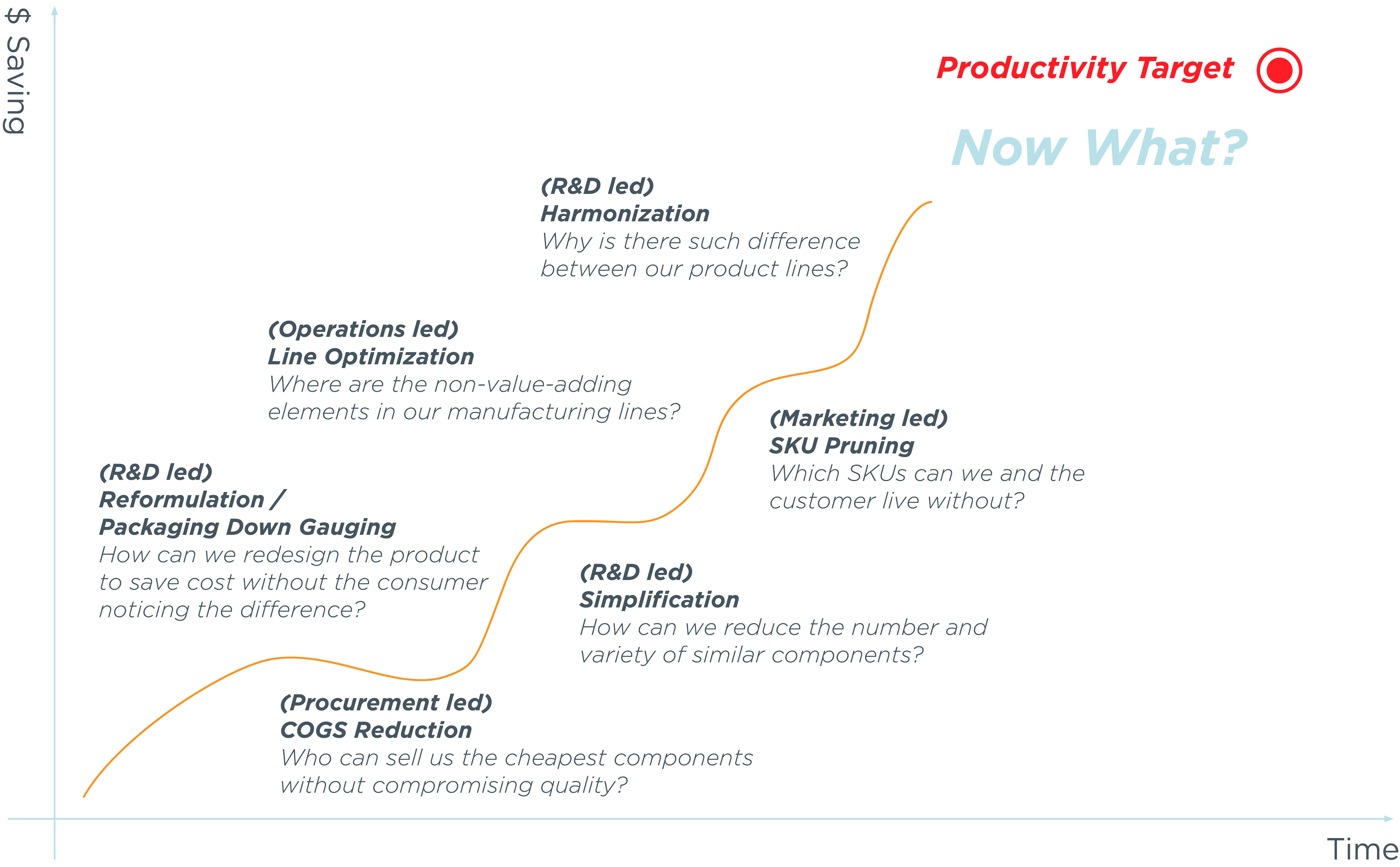

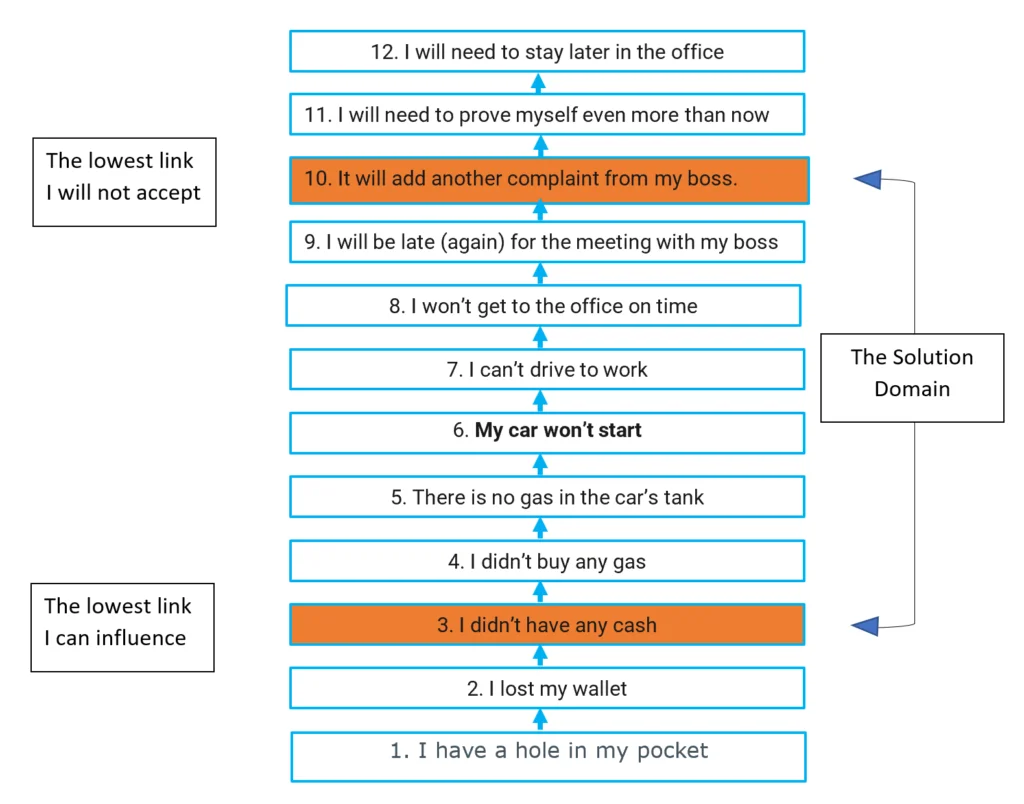
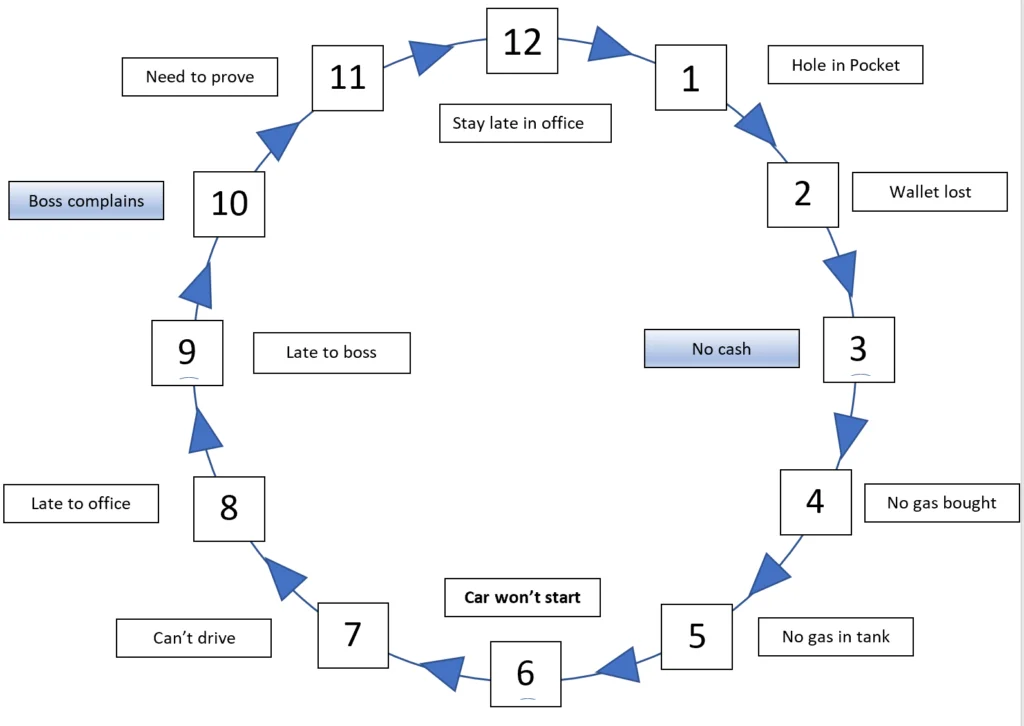




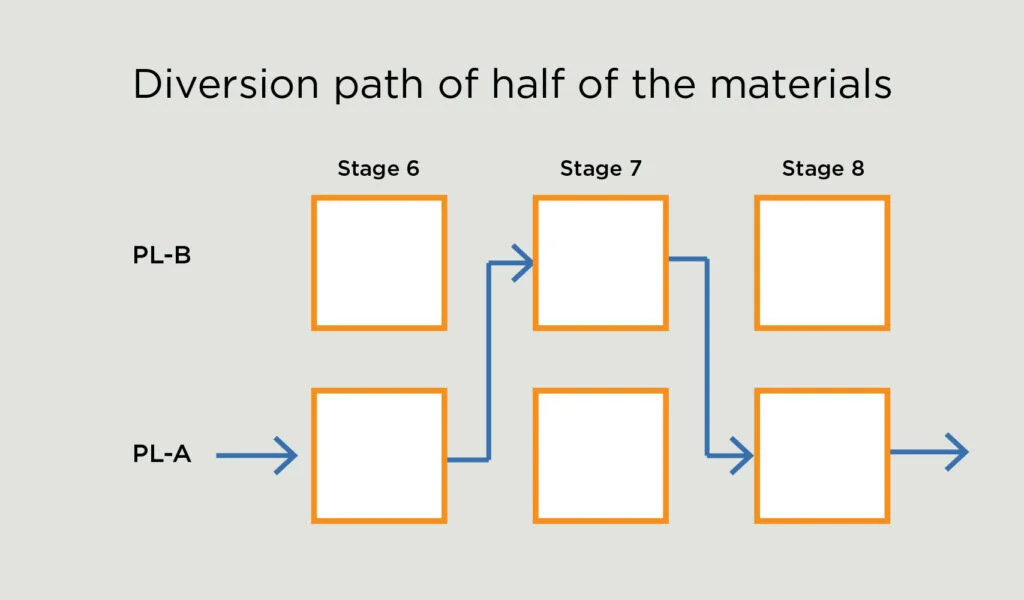





 Design rewards that are consistent with your company’s culture, products, structure, and goals. Copy only if you think the model will work for your company, not because it worked wonders somewhere else.
Design rewards that are consistent with your company’s culture, products, structure, and goals. Copy only if you think the model will work for your company, not because it worked wonders somewhere else.



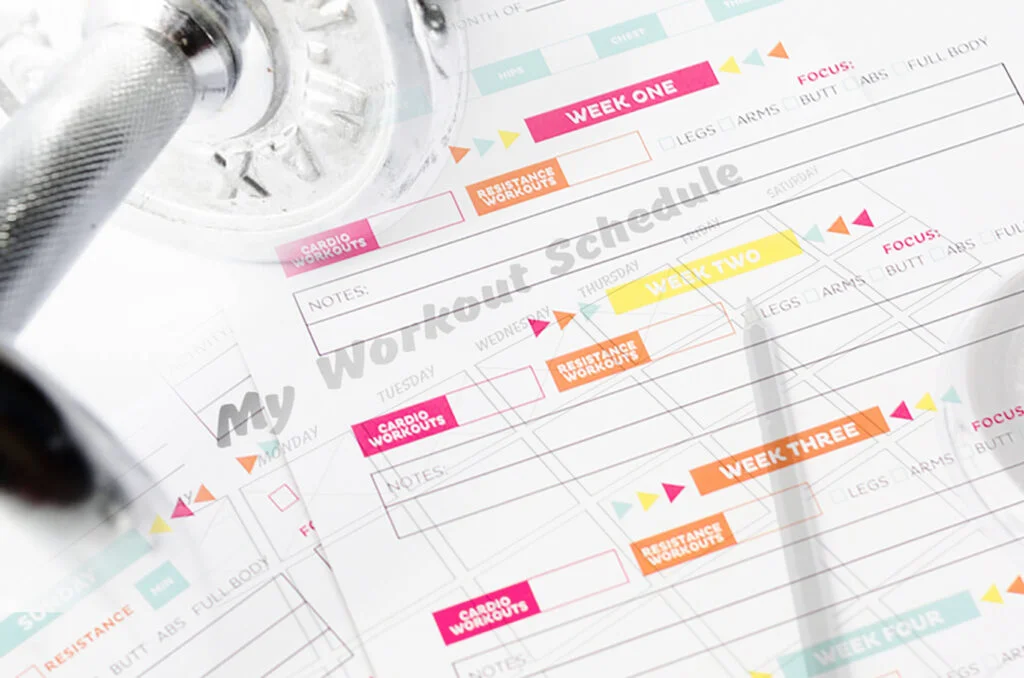


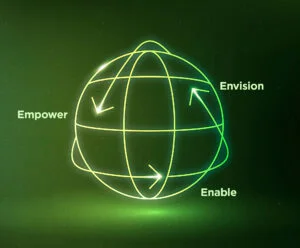

 Collaboration across units/collaborative inquiry: Although investing efforts in one’s unit is key, creating collaborations and partnerships with others is also very important for driving innovation, especially in a corporate setting. Understanding the underlying assumptions of existing practices will enable leaders to both adopt appropriate collaboration models and create (or adapt) new ones, overcoming NIH (“not invented here”) syndromes. What is the company culture on collaboration? Who would be your natural partners? Is there a less intuitive partner you could bring to the pool? How do you create mutual benefit for all parties involved?
Collaboration across units/collaborative inquiry: Although investing efforts in one’s unit is key, creating collaborations and partnerships with others is also very important for driving innovation, especially in a corporate setting. Understanding the underlying assumptions of existing practices will enable leaders to both adopt appropriate collaboration models and create (or adapt) new ones, overcoming NIH (“not invented here”) syndromes. What is the company culture on collaboration? Who would be your natural partners? Is there a less intuitive partner you could bring to the pool? How do you create mutual benefit for all parties involved?

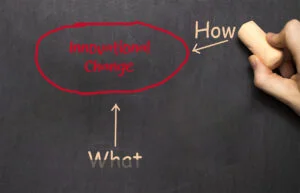 Prioritize the HOW over the WHAT. As made famous by Michael Polanyi (philosopher and all-round Hungarian/errant-Jew intellectual) there is a crucial distinction between knowing that and knowing how. You can, say, be an expert on the mechanics of the operation of a bicycle and still fall every time you try to ride one, while, obviously, most kids who can zip by you easily on their bike do not have the faintest notion of how it operates. Their knowledge, argues Polanyi, is tacit rather than explicit. Behavioral change is based on tacit knowledge, which is why you should be careful not to define a training only by its “content”. What percentage of a bike learning course for your kids would you want to be dedicated to explanations? If your goal is that they know how to ride a bike, the answer is probably “close to zero”. Review your next training session through this lens, by asking of each item in the syllabus: will it teach them how to do something? What?
Prioritize the HOW over the WHAT. As made famous by Michael Polanyi (philosopher and all-round Hungarian/errant-Jew intellectual) there is a crucial distinction between knowing that and knowing how. You can, say, be an expert on the mechanics of the operation of a bicycle and still fall every time you try to ride one, while, obviously, most kids who can zip by you easily on their bike do not have the faintest notion of how it operates. Their knowledge, argues Polanyi, is tacit rather than explicit. Behavioral change is based on tacit knowledge, which is why you should be careful not to define a training only by its “content”. What percentage of a bike learning course for your kids would you want to be dedicated to explanations? If your goal is that they know how to ride a bike, the answer is probably “close to zero”. Review your next training session through this lens, by asking of each item in the syllabus: will it teach them how to do something? What?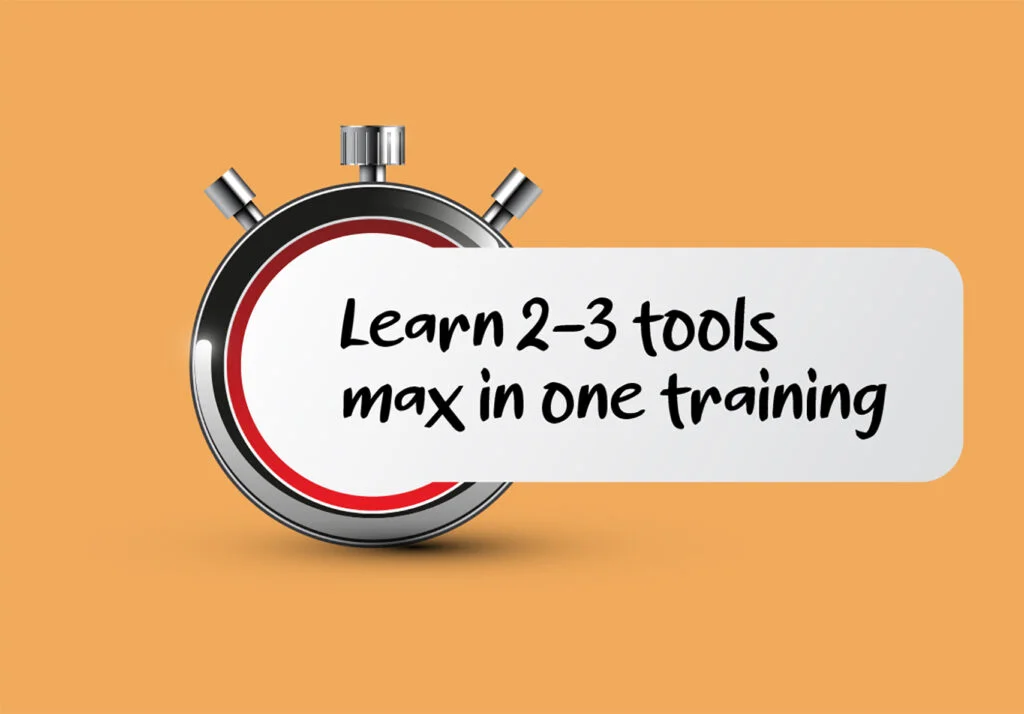

 Over the past century or so, innovation is gradually becoming a more dominant factor in our world. However, despite the increasing presence and influence innovations have on our everyday lives, none of them made it into our language – save one: sliced bread. We often hear statements like “it’s the greatest thing since sliced bread!” But have you ever stopped to ask yourself how this seemingly simple innovation managed to become the benchmark for future inventions? A closer look at the history of sliced bread may shed some light on this question.
Over the past century or so, innovation is gradually becoming a more dominant factor in our world. However, despite the increasing presence and influence innovations have on our everyday lives, none of them made it into our language – save one: sliced bread. We often hear statements like “it’s the greatest thing since sliced bread!” But have you ever stopped to ask yourself how this seemingly simple innovation managed to become the benchmark for future inventions? A closer look at the history of sliced bread may shed some light on this question. In the early years of the 20th century, Otto Frederick Rohwedder had a revolutionary idea: why not sell bread that is already sliced?! A Jeweler by profession, Rohwedder had little to do with the baking industry, but living in a small town in Iowa, right in the middle of the bread basket of America, he was no stranger to it.
In the early years of the 20th century, Otto Frederick Rohwedder had a revolutionary idea: why not sell bread that is already sliced?! A Jeweler by profession, Rohwedder had little to do with the baking industry, but living in a small town in Iowa, right in the middle of the bread basket of America, he was no stranger to it.
